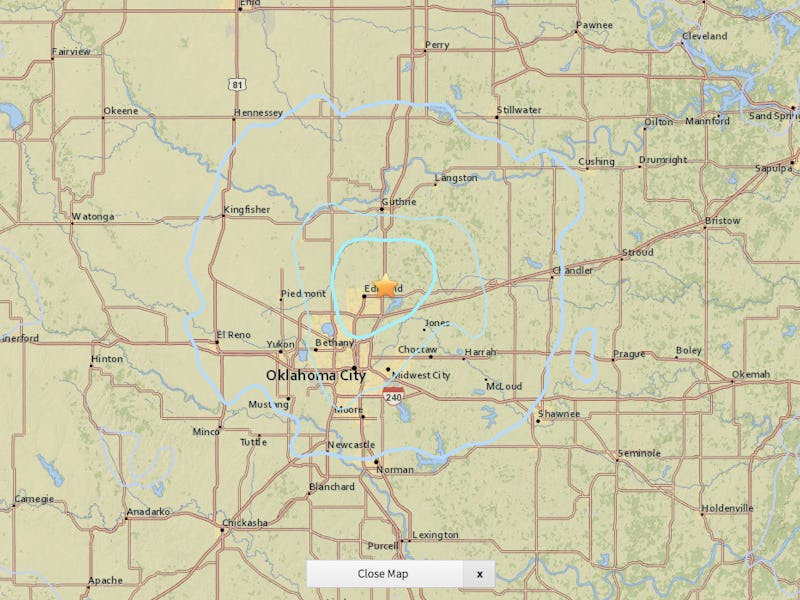Fracking Didn't Trigger Oklahoma's Earthquake Swarm
A different industry is at fault.

A magnitude 4.2 earthquake struck near Oklahoma City on Wednesday night, the largest in a swarm of seven over the course of just 28 hours. Residents reported cracked walls and floors, together with household items shaken off shelves and counters.
Earthquakes used to be rare in that part of the world, but they’ve become increasingly common since the region’s boom in oil and gas production, which includes the process of hydraulic fracturing (better known as fracking). Last year, Oklahoma shook with a 5.6 magnitude quake — one of the biggest ever recorded in the state.
The link between fracking and earthquakes is well established, but the exact process by which it happens is less well known. In hydraulic fracturing, water, sand, and chemicals are injected into wells deep underground under high pressures. Doing this opens up cracks in the shale rock formation, allowing trapped methane gas to flow back out and up.
Wastewater disposal wells are mostly likely to induce earthquakes, though other activities that change pressures underground do as well.
In most parts of the world, fracking itself has not been linked to induced seismicity. Instead, it’s the disposal of the wastewater oil and gas production that appears to destabilize faults. Fracking uses an enormous amount of water, and while some can be reused, ultimately it must be stored permanently underground to avoid the contamination of groundwater sources.
However, most of the wastewater produced in the United States is a byproduct of oil production, not fracking. Drilling for oil often brings up large quantities of water to the surface, too. It is toxic and must be disposed permanently.
The process of water disposal is similar to fracking itself, in that the liquid is pumped deep underground under pressure. But fracking is a brief process, maintaining pressure only long enough to open up cracks in the rock below. Meanwhile, water disposal wells operate continuously over long periods of time, and the pressure underground builds as more and more water is forced downwards. Because of this, these wells are more likely to cause earthquakes than the ones where natural gas production is actually taking place.
But hydraulic fracturing can induce earthquakes under the right conditions. A 2016 study in Science found that hydraulic fracturing in western Canada changed underground pressures enough to reactivate faults that had gone quiet.
This map shows oil and gas wells drilled between 1939 and 2016 in Oklahoma.
In Oklahoma, though, the main culprit is the oil industry, not the gas industry. Less that 10 percent of wastewater pumped underground in the state is a byproduct of fracking.
There are oil and gas wastewater disposal wells all over the state, and we don’t yet know enough about this process to pinpoint which ones are causing most of the shaking. But regulations do help — Oklahoma’s induced earthquake problem has quieted in response to new rules around how to properly dispose of wastewater.